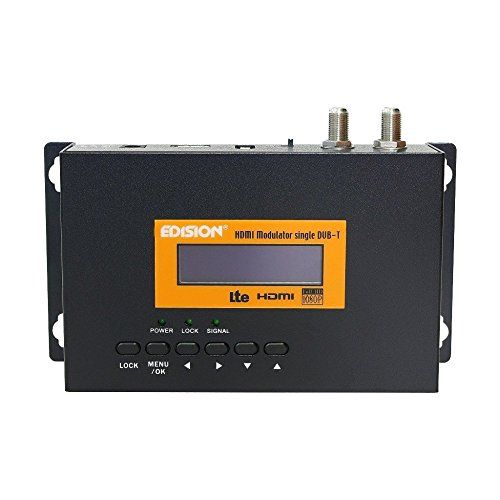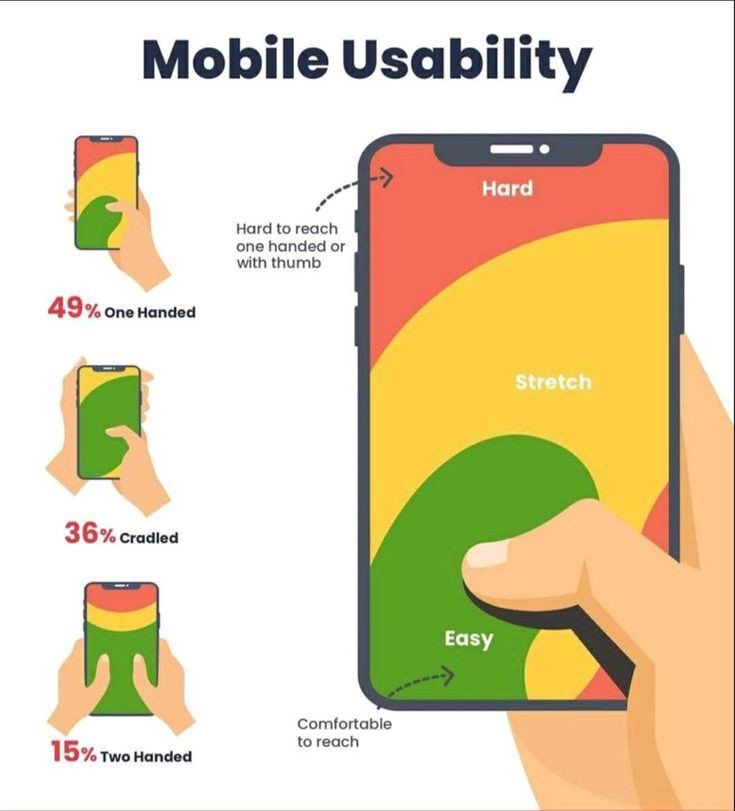HD Coax Modulatoh and How Does it Work
AnHD Coax Modulatoh is a device used in video distribution systems to convert high-definition (HD) video signals into a format suitable for transmission over coaxial cables. It takes the video input, typically from a source such as a Blu-ray player, satellite receiver, or media player, and modulates it onto a specific frequency that can be received by standard coaxial cable TV systems.
The process of modulation involves combining the video signal with a carrier signal, which is a high-frequency signal used for transmission. The modulator adjusts the amplitude, frequency, or phase of the carrier signal to represent the video signal. This modulation process allows the video signal to be transmitted over the coaxial cable without interference.
Here’s a simplified explanation of how an HD coax modulator works:
- Video Input: The modulator accepts an HD video signal from a source device, such as an HDMI or component video source. This input can be in various formats, including 720p, 1080i, or 1080p.
- Encoding: The video signal is encoded into a digital format using a video encoder. This process converts the analog video signal into a digital stream that can be easily manipulated and transmitted.
- Modulation: The encoded video stream is then modulated onto a specific frequency. The modulator adjusts the characteristics of the carrier signal to represent the digital video stream accurately. Common modulation techniques used in HD coax modulators include QAM (Quadrature Amplitude Modulation) or COFDM (Coded Orthogonal Frequency Division Multiplexing).
- Channel Assignment: The modulator assigns the modulated signal to a specific channel on the coaxial cable system. This channel is typically chosen to avoid interference with existing channels in the system.
- Transmission: The modulated signal is then sent over the coaxial cable infrastructure to be distributed to TVs or other receiving devices connected to the cable system.
- Reception: At the receiving end, the modulated signal is received by compatible devices, such as cable TV tuners or set-top boxes. These devices demodulate the signal, extracting the original digital video stream.
- Decoding: The extracted digital video stream is decoded back into an analog format suitable for display on a TV or other video output device.
By using an HD coax modulator, video signals can be distributed over existing coaxial cable systems, which are commonly found in homes, hotels, and other establishments. This allows for convenient distribution of high-definition video to multiple displays without the need for separate HDMI cables or extensive rewiring.
features
HD Coax Modulatoh come with various features that enhance their functionality and versatility. Here are some common features found in HD coax modulators:
- HD Video Compatibility: HD coax modulators are designed to support high-definition video formats, such as 720p, 1080i, and 1080p. They can handle HD signals from sources like Blu-ray players, gaming consoles, and satellite receivers.
- Multiple Inputs: Many HD coax modulators offer multiple input ports, allowing you to connect multiple video sources simultaneously. These inputs can include HDMI, component, or composite video connections, providing flexibility in connecting different devices.
- Encoding Options: HD coax modulators may offer different encoding options to support various video compression formats, such as MPEG-2 or H.264. This enables efficient encoding and transmission of video signals while maintaining high-quality output.
- Modulation Standards: HD coax modulators support different modulation standards, such as QAM or COFDM, to ensure compatibility with various cable TV systems. This allows the modulated signal to be received and processed by standard cable TV tuners or set-top boxes.
- Channel Flexibility: The modulators provide flexibility in assigning the modulated signal to specific channels on the cable TV system. This allows you to select channels that are not already occupied by existing broadcasts to avoid interference.
- RF Output Power Adjustment: Some HD coax modulators allow you to adjust the RF output power. This feature is beneficial in situations where you need to optimize the signal strength based on the cable system’s requirements or the distance between the modulator and the receiving devices.
- IR Control Passthrough: Certain models of HD coax modulators include IR (Infrared) control passthrough functionality. This enables you to control the connected video sources remotely, even when they are located away from the display devices.
- Network Connectivity: Advanced HD coax modulators may offer network connectivity options, such as Ethernet or Wi-Fi. This allows for remote management and control of the modulator, facilitating configuration changes and firmware updates.
- Web-based Interface: Many HD coax modulators provide a web-based interface for easy configuration and control. Through the interface, you can access settings, monitor the system status, and make adjustments conveniently using a web browser on a computer or mobile device.
- Compact and Rack-Mountable Design: HD coax modulators are often compact in size and designed for easy installation. They may also include mounting brackets or rack-mountable options, making them suitable for integration into professional AV installations.
These features make HD coax modulators versatile tools for distributing high-definition video signals over existing coaxial cable systems, allowing for efficient and convenient video distribution in various applications.
Also read:Online business rg gaming
proses

HD Coax Modulatoh involves several steps to convert and distribute the high-definition video signal. Here’s a general overview of the process:
- Connect Video Sources: Begin by connecting your video sources, such as a Blu-ray player, gaming console, or satellite receiver, to the input ports of the HD coax modulator. The modulator may have HDMI, component, or composite video inputs, depending on the model.
- Video Encoding: The modulator converts the incoming video signals into a digital format using a video encoder. This encoding process converts the analog video into a digital stream that can be manipulated and transmitted.
- Modulation: The encoded video stream is modulated onto a specific frequency. The modulator adjusts the characteristics of the carrier signal to represent the digital video accurately. This modulation process ensures that the video signal can be transmitted over the coaxial cable without interference.
- Channel Assignment: The modulator assigns the modulated signal to a specific channel on the coaxial cable system. This channel is typically chosen to avoid interference with existing channels in the cable system. The modulator may offer settings or controls to adjust the channel assignment.
- RF Output: The modulated signal is sent out through the RF output port of the HD coax modulator. This RF signal is then connected to the coaxial cable infrastructure in your building or home.
- Cable Distribution: The modulated signal is distributed through the coaxial cable infrastructure to the various receiving devices, such as TVs or set-top boxes, that are connected to the cable system. These devices need to be compatible with the modulation standard used by the modulator.
- Signal Reception: At the receiving end, the compatible devices, such as cable TV tuners or set-top boxes, receive the modulated signal from the coaxial cable. These devices have the capability to demodulate the signal, extracting the original digital video stream.
- Video Decoding: The extracted digital video stream is then decoded back into an analog format suitable for display on a TV or other video output devices. This decoding process reverses the encoding done by the modulator, allowing the video to be displayed in its original format.
By following these steps, the HD coax modulator enables the distribution of high-definition video signals over existing coaxial cable systems, providing a convenient and efficient solution for video distribution in various settings.
cons
While HD coax modulators offer several advantages for video distribution, there are also some potential limitations or drawbacks to consider. Here are some common cons associated with HD coax modulators:
- Limited Resolution Support: Although HD Coax Modulatoh can handle high-definition video signals, they may not support the highest resolutions available, such as 4K or 8K. If you require distribution of ultra-high-definition content, alternative solutions like HDMI over IP or dedicated fiber optic systems may be more suitable.
- Limited Bandwidth: Coaxial cable systems have limited bandwidth compared to newer transmission technologies like HDMI or IP. This limitation may affect the number of channels or the quality of the video that can be transmitted simultaneously. It’s important to consider the bandwidth requirements of your video distribution system and ensure that the coaxial cable infrastructure can support it.
- Signal Degradation: Coaxial cables are susceptible to signal degradation over long distances. As the video signal travels through the coaxial cable infrastructure, there can be some loss of quality, resulting in reduced video clarity or weaker signals at the receiving end. It’s essential to consider the cable length and the quality of the cables to minimize signal degradation.
- Compatibility with Existing Cable Systems: HD coax modulators need to work within the existing cable TV system. They must comply with the modulation standards used by the cable system, such as QAM or COFDM. Compatibility issues may arise if the modulator’s modulation standard does not align with the cable system’s requirements. It’s important to verify compatibility before implementing an HD coax modulator.
- Single Channel per Coaxial Cable: Each HD coax modulator typically transmits one channel per coaxial cable. This means that if you want to distribute multiple channels simultaneously, you will need multiple modulators and separate coaxial cable connections. This can lead to increased complexity and wiring requirements.
- Lack of Two-Way Communication: Coaxial cable systems used for video distribution typically support one-way communication, meaning that you can transmit video signals from the modulator to the receiving devices, but you cannot transmit control signals or feedback from the receiving devices back to the modulator. This limitation may impact interactive features or control capabilities in certain applications.
- Cost: While HD coax modulators provide a cost-effective solution for video distribution over existing coaxial cable systems, they still involve expenses for the modulator equipment, coaxial cables, and compatible receiving devices. The overall cost may vary depending on the specific requirements of your video distribution setup.
It’s important to assess these limitations and consider your specific needs and infrastructure before implementing an HD coax modulator. Evaluating alternatives, such as HDMI over IP or dedicated fiber optic systems, can help determine the most suitable solution for your video distribution requirements.
conclusion
In conclusion, HD coax modulators serve as convenient tools for distributing high-definition video signals over existing coaxial cable systems. They offer features such as multiple inputs, encoding options, modulation standards, and channel flexibility. However, it’s important to consider the limitations of HD coax modulators, including limited resolution support, bandwidth constraints, signal degradation over long distances, compatibility with existing cable systems, single-channel per coaxial cable limitation, lack of two-way communication, and associated costs.
Before implementing an HD Coax Modulatoh , it is essential to evaluate your specific video distribution needs, infrastructure, and desired resolution requirements. Consider alternative solutions, such as HDMI over IP or dedicated fiber optic systems, if you require higher resolutions or more advanced features. By carefully considering the pros and cons, you can make an informed decision about whether an HD coax modulator is the right choice for your video distribution setup.
Also read:Get To Know NSwonsnap: The Latest Social Media Craze






